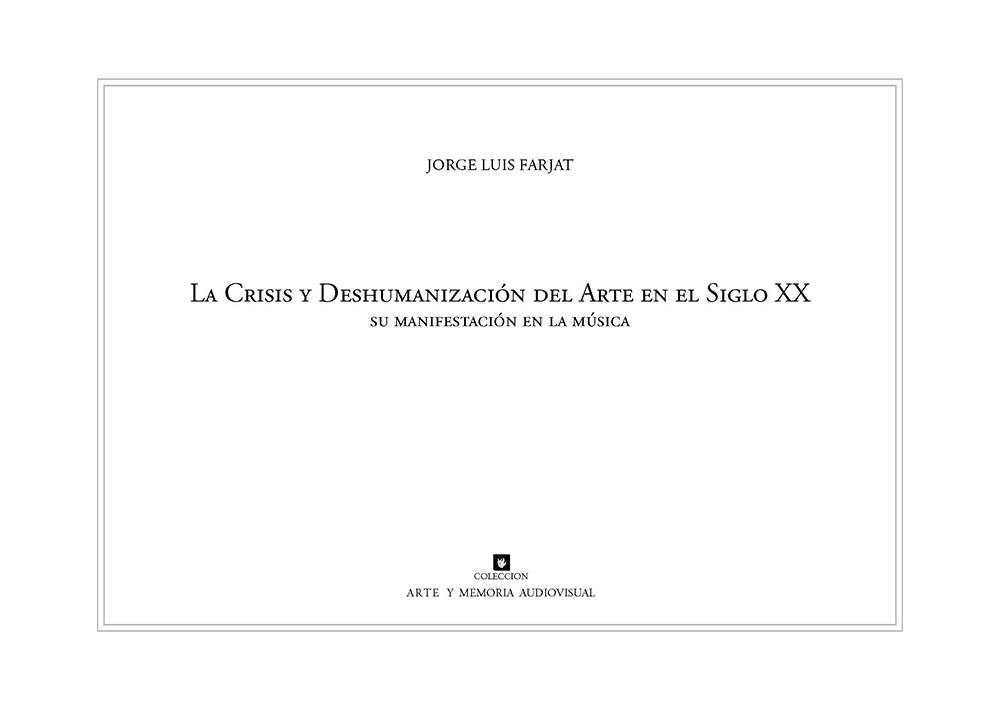The crisis and dehumanization of art in the 20th century:
its representation in music
Jorge Luis Farjat
The purposes of this study are aimed at showing, on the one hand, how dehumanization of contemporary music, particularly the massively distributed one, is related to the deterioration of its aesthetic function, considering the aesthetic fact as the main support of art. Therefore, an important part of this work is focused on showing the reasons of such decline.
On the other hand, the purpose is analyzing how this phenomenon is developed simultaneously with a historical crisis, typical of the 20th century, in which art, more than ever, is linked in a strong dependen ce on the socio-economical structures; therefore, music becomes an instrument of mass consumption at the service of the elites that run and manage the mass media.
The author also tries to regulate one of the main factors that cause the dehumanization of most of the music during the 20th century and the beginning of this century. This means that its contents, also due to its great psychological and physiological influence, are not adjusted to the human basic needs; instead, they are against its aesthetic, moral and spiritual evolution and, in conclusion, they are the consequence of the expression of the lifestyles that motivate them (Excerpt from the Introduction in the book).
Música: Jean Sibelius (1865-1957)

